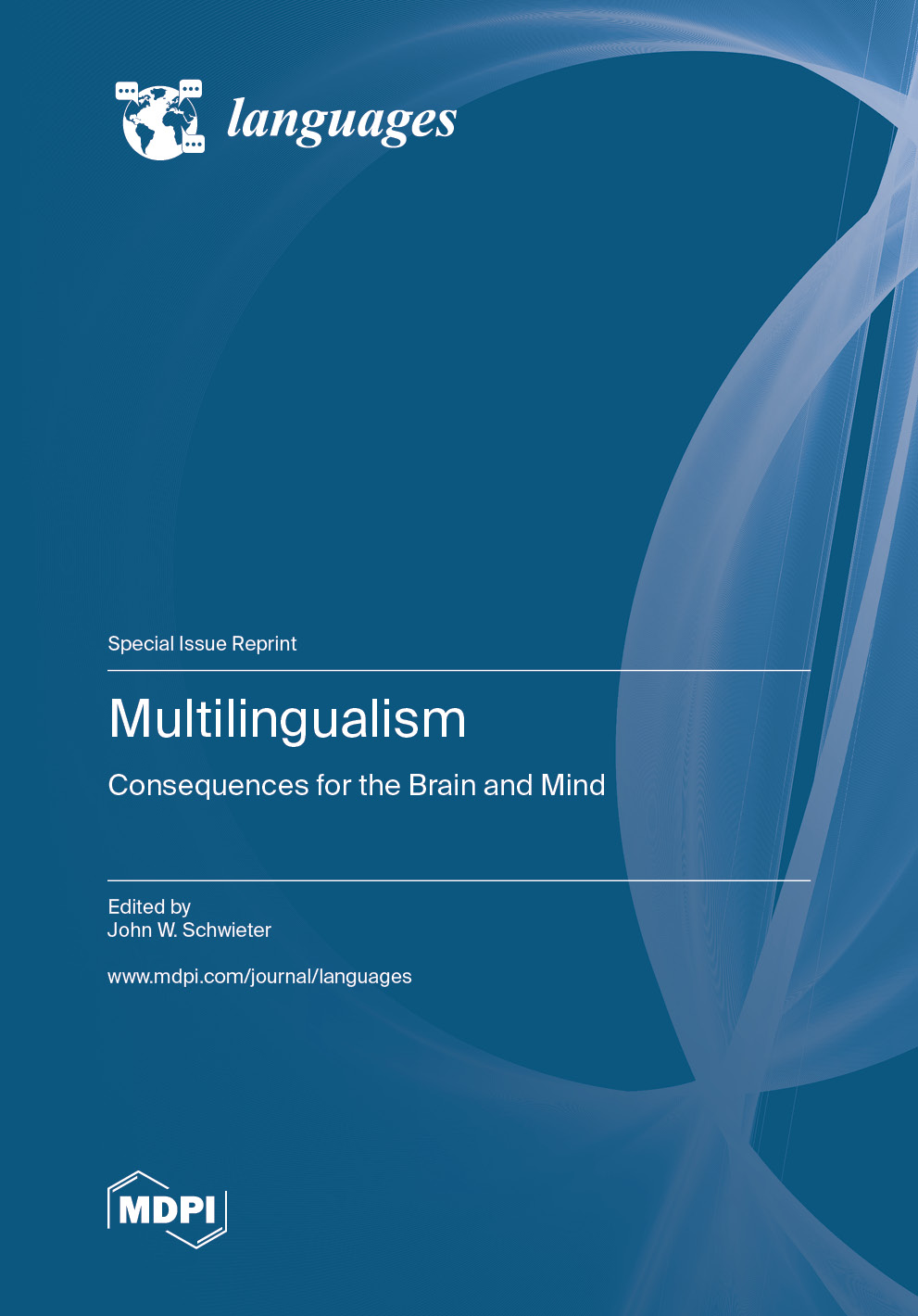Multilingualism: Consequences for the Brain and Mind
A special issue of Languages (ISSN 2226-471X).
Deadline for manuscript submissions: closed (15 May 2022) | Viewed by 41748
Special Issue Editor
Interests: bilingualism/multilingualism; language acquisition; psycholinguistics; neurolinguistics; translation, interpreting, and cognition
Special Issue Information
Dear Colleagues,
For multilinguals, acquiring and processing language is similar to other cognitive skills: they are grounded in mechanisms of sensory processing and motor control (Paradis, 2019). Recent clinical and experimental research on multilingualism have introduced innovative neuroimaging measures and psychological methods that have significantly shed light on what we know (and don’t know) about how multiple languages are processed, represented, and controlled in the mind/brain (Schwieter, 2019).
Since the 1990s and 2000s, a plethora of behavioral and neurological research has demonstrated that for multilinguals, all languages are active to some degree in the mind, even when only using one. Furthermore, the need for the mind to manage the ongoing competition that arises from this parallel activation has been shown to affect cognition (e.g., executive functioning) (Giovannoli et al., 2020), modify the structure and functioning of the brain (e.g., changes in the areas where language control and executive control overlap) (Costa and Sebastián-Gallés, 2014), and slow the onset or progression of cognitive and neural decline (Bialystok, 2017).
The goal of this Special Issue is to bring together state-of-the art papers that examine the cognitive and neurological consequences of multilingualism through an exploration of how two or more languages are processed, represented, and/or controlled in one brain/mind. Papers are invited, either theoretically or empirically oriented, to present new findings, frameworks, and/or methodologies on these topics. We request that, prior to submitting a manuscript, interested authors initially submit a proposed title and an abstract of 400–600 words summarizing their intended contribution. Please send it to the guest editor (jschwieter@wlu.ca). Abstracts will be reviewed by the guest editor for the purposes of ensuring proper fit within the scope of the Special Issue. Full manuscripts will undergo double-blind peer-review.
Prof. Dr. John W. Schwieter
Guest Editor
Tentative completion schedule:
• Abstract submission deadline: September 15, 2021
• Notification of abstract acceptance: October 15, 2021
• Full manuscript deadline: March 15, 2022
References
- Bialystok, E. (2017). The bilingual adaptation: How minds accommodate experience. Psychological Bulletin, 143, 233-262.
- Costa, A., & Sebastián-Gallés, N. (2014). How does the bilingual experience sculpt the brain? Nature Reviews Neuroscience, 15, 336-345.
- Giovannoli, J., Martella, D., Federico, F., Pirchio, S., & Casagrande, M. (2020). The impact of bilingualism on executive functions in children and adolescents: A systematic review based on the PRISMA method. Frontiers in Psychology, 11(574789).
- Paradis, M. (2019). Special foreword. In J. W. Schwieter (Ed.), The handbook of the neuroscience of multilingualism (pp. xxxiii-xxxvii). Malden, MA/Oxford, England: Wiley-Blackwell.
- Schwieter, J. W. (Ed.). (2019). The handbook of the neuroscience of multilingualism. Malden, MA/Oxford, England: Wiley-Blackwell.
Manuscript Submission Information
Manuscripts should be submitted online at www.mdpi.com by registering and logging in to this website. Once you are registered, click here to go to the submission form. Manuscripts can be submitted until the deadline. All papers will be peer-reviewed. Accepted papers will be published continuously in the journal (as soon as accepted) and will be listed together on the special issue website. Research articles, review articles as well as short communications are invited. For planned papers, a title and short abstract can be sent to the Editorial Office for announcement on this website.
Submitted manuscripts should not have been published previously, nor be under consideration for publication elsewhere (except conference proceedings papers). All manuscripts are thoroughly refereed through a double-blind peer-review process. A guide for authors and other relevant information for submission of manuscripts is available on the Instructions for Authors page. Languages is an international peer-reviewed open access quarterly journal published by MDPI.
Please visit the Instructions for Authors page before submitting a manuscript. The Article Processing Charge (APC) for publication in this open access journal is 1200 CHF (Swiss Francs). Submitted papers should be well formatted and use good English. Authors may use MDPI's English editing service prior to publication or during author revisions.
Keywords
- bilingualism
- multilingualism
- neurolinguistics
- psycholinguistics
- language and brain
- language and mind






